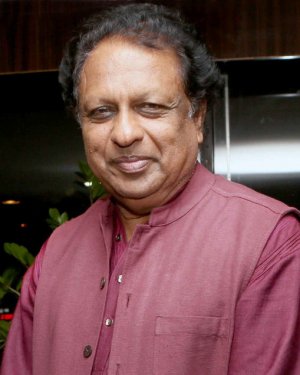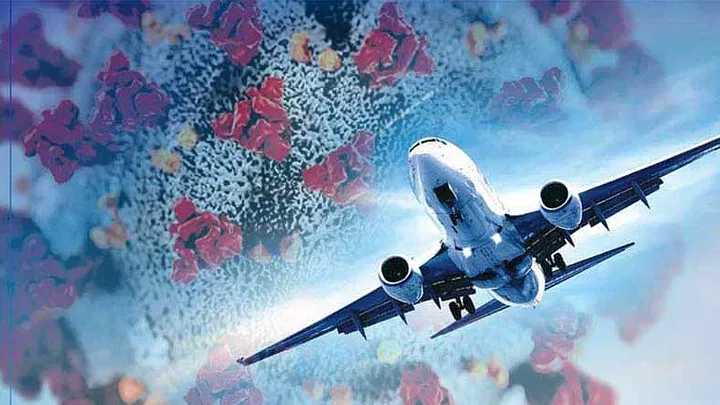
Airlift Then and Now
The airlift of Indians from the Gulf following the outbreak of the pandemic, COVID-19 is history repeating itself except that in 1990, the villain was President Saddam Hussein, who annexed Kuwait, while this time it is the coronavirus, which is sweeping across the globe. On August 2,1990, at about 2 a.m. local time, Iraqi forces invaded Kuwait, Iraq’s tiny, oil-rich neighbour. Kuwait’s defence forces were rapidly overwhelmed, and those that were not destroyed,retreated to Saudi Arabia. The Emir of Kuwait, his family, and other government leaders fled to Saudi Arabia, and within hours Kuwait City had been captured and the Iraqis had established a provincial government. By annexing Kuwait, Iraq gained control of 20 percent of the world’s oil reserves and, for the first time, a substantial coastline on the Persian Gulf.
I was at a lunch at the Australian High Commission in honour of the visiting Australian Foreign Minister at which our External Affairs Minister Inder Gujral was also present when the news of the invasion of Kuwait reached New Delhi and there was a quick discussion on the developments involving the two Foreign Ministers. My recollection is that the gathering came to the rapid conclusion that the annexation was irreversible and that Saddam Hussein had become a leading player in the Gulf. Nobody mentioned the possibility of a US or UN intervention, particularly as there were rumours that the US had indirectly encouraged Saddam Hussein to take over Kuwait.
I went straight to a “Core Group” Meeting on Kuwait set up under the head of the Gulf Division, Ambassador K.P.Fabian, to which I was invited as the Head of the UN Division since the matter was already under consideration of the UN in New York. The immediate concern of the “Core Group” was the fate of the Indians in Kuwait and Iraq rather than the invasion itself. Our vision was totally clouded by this consideration and a decision was taken to send the EAM Gujral to Baghdad to request for permission to evacuate the Indian nationals in Iraq and Kuwait. The picture of our Minister hugging Saddam so soon after the invasion created a stir in the international community, particularly in the GCC countries. Saddam was very friendly to our Minister and he was permitted to take back a few Indians on the Minister’s plane. They were supposed to be sick and aged, but the passengers, as they alighted from the plane in Delhi, looked neither sick nor old. This particular visit was misunderstood as a supportive gesture for Saddam and so it imposed some strain with the GCC countries.
Answering criticism that India had not condemned the Iraqi invasion of Kuwait, Ambassador K.P.Fabian said: “We did not use the word ‘condemn’ in our statement [about the Iraqi attack], for two reasons: one, we were concerned about our nationals there; second, we still believed that there was some scope for a negotiated solution to the problem. We were keen to play a role. If we condemned the development openly, it would have been difficult for us to deal with Iraq.”
What followed was the world’s largest air evacuation mission in history. The operation continued for almost two months and managed to airlift over 1,70,000 Indians from Kuwait with the help of 488 flights in just 59 days. Air India entered into the Guinness Book of World Records for the civil airline that had evacuated the most people till date.
Although the threat of any pandemic infection was not there at that time, evacuating the Indian community from Kuwait was hazardous. The occupying forces were generally friendly to the Indians, but they were afraid that some Kuwaiti nationals might smuggle themselves out to Jordan with the Indians. Many Indians were reluctant to leave their comfortable homes and lifestyle empty handed. Moreover, their passports were with their employers, some of whom were captured or killed. Also, Indians had taken shelter in various schools and other buildings in various parts of Amman and it took time for them to reach the airport in Amman to fly out, causing flight delays and inconvenience to the crew.
According to the Annual Report of the Ministry of External Affairs 1990-91, within a space of two months and a half, over 150,000 Indian nationals were evacuated through air, land and sea from Kuwait and Iraq. The bulk of them were airlifted from Amman where they reached through the land route from Kuwait and Baghdad. On receiving reports of shortages of food in Kuwait and Iraq, India sent 9775 tonnes of essential food supplies and medicines with the approval of the UN Sanctions Committee through Indian ship M.V. Vishva Siddhi, which reached the Iraqi port of Um Qasr on 26 September 1990. Four thousand seven hundred seventy three tonnes of these food items were distributed among Indian nationals and others and the rest were off-loaded and stored in Iraq and Kuwait on the advice of the UN Sanctions Committee for distribution among nationals of other countries. The Gulf crisis placed additional burden on India's economy, in terms of lost export opportunities, sudden stop in remittances, cost of repatriation and rehabilitation, higher prices of oil and the need to find alternative sources to offset interruption in supplies from Iraq and Kuwait. India had an additional foreign exchange burden during the year itself to the tune of US $ 4 billion directly due to these developments.
We made an effort to seek compensation for these losses in accordance with Article 50 of the UN Charter. As the Deputy Permanent Representative of India to the UN at that time, I was elected the chair of the Article 50 Committee of the Security Council, but the permanent members blocked any action for compensation in spite of my best efforts. But the International Organisation for Migration (IOM) assisted India to organise some evacuation flights, though the MEA Report is silent about it.
Although the airlift was organised by our Embassies in Baghdad and Amman, a Bollywood movie called ‘Airlift’ gave the entire credit to some leaders of the Indian community in Kuwait. Moreover, the embassies and the Ministry of External Affairs are shown as unresponsive and complacent. The film is a thriller with Akshaya Kumar, who establishes a relationship with the Iraqi commander in Kuwait. It is true that many Indians worked tirelessly, particularly “Toyota Sunny” a senior Indian who was involved in the operation together with the Embassy. The story misrepresented the role of the Embassies in the region to give greater credit to the hero of the film.
The airlift in 1990 was hazardous because of the threat of war and the atmosphere of tension. But in 2020, the danger of the pandemic is more challenging as the virus is invisible and defence measures are not guaranteed to be effective. The numbers involved are more because all countries, developed and developing, are equally vulnerable. In 1990, many from Kuwait went to the UK and the USA and established themselves there. But this time, the most advanced developed countries are even more hazardous because of the infection and mortality rates. Although India is committed to bring back our nationals, we should allow time for the affected Indians to make an informed judgment. Many who have jobs and steady income should not leave just because Kerala and India appear more secure. Nobody knows the trajectory of the virus at the moment.
Any timetable for airlifts can only be tentative because the demands are many and the resources are dwindling fast. The decision to bring the Indians back in stages is wise. The first flights which have come from the Gulf. Bringing those who wish to return should be brought in small numbers so that their experience will guide others to take their decisions.
Another major difference is that the global economy is moving to a recession and there is no safe zone in this respect. The choice between saving lives and saving livelihoods is indeed a hard one and a balanced approach is difficult to adopt. In 1990, there were safe havens for those who left the Gulf, but there is a danger of the returnees jumping from the frying pan into the fire this time. An effective vaccine or a medicine only can alter the situation. In the meantime, there will be uncertainty, frustration and despair in spite of the best efforts of the Government.
Resettlement of the returnees is the biggest challenge that the Government will face. Many may return when the situation improves, but there will still be many without resources and skills necessary to rebuild their fractured lives. In the past, only less than 4000 returnees have benefitted from assistance from Kerala. A careful study of the liabilities and assets of the returnees must be made and a plan prepared to rehabilitate them.
~~~~~~~~~~~~~~~~~~~~~~~~~~~~~~~~~~~~~~~~~~~~~~~~~~~~~~~~~~~~~~~~~~~~~~~~~~~~~~~~~~~~~~~~~~~~~~~~~~~~~~~~~~~~~~~~~~~~~
The facts and views in the article are those of the writer.

